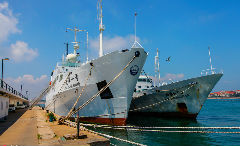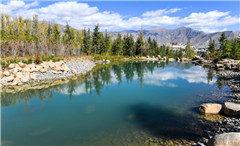China launches new mechanism to protect marine ecology
2018-03-16
Xinhua
HANGZHOU — China has initiated a pilot mechanism of appointing “gulf chiefs” to tackle pollution on coastlines and offshore areas.
The State Oceanic Administration (SOA) on March 14 held the first on-site meeting in Taizhou, East China’s Zhejiang province, to oversee the pilot results.
Officials and supervisors from the administration viewed information boards erected along the coast in Shitang Township, which provided information including the names and contact means of the gulf chiefs responsible for supervising the sections of coastline.
Each board also has a QR code for the public to report cases of pollution.
In 2017, some 2,000 gulf chiefs were appointed in the pilot in Zhejiang. The province has 6,486.24 kilometers of coastline, the most in China.
Pan Chongmin, director of the marine and fishery bureau in Taizhou, told the meeting that gulf chiefs have helped clear and block off 117 outlets discharging sewage into the sea. Thanks to these efforts, the water quality of four estuaries in the city now meets the national standard.
More than 80 percent of marine pollution derives from land. An SOA meeting in January concluded a nationwide survey of land-based sources of marine pollution, identifying a total of 9,600 such sources.
The SOA selected the province of Zhejiang and cities of Qinhuangdao, Qingdao, Lianyungang, and Haikou to pilot the gulf-chief mechanism at the start of 2017.
Sun Shuxian, deputy director of the SOA, said at the meeting that the pilot should be extended and expanded this year, and a national standard system to evaluate the work of gulf chiefs should be established based on the pilot results.
The protection mechanism for maritime pollution control outlined by the SOA is similar to the approaches of “river chiefs” and “lake chiefs” which have been widely adopted nationwide since 2016 and have achieved visible results in combating pollution.
Under the mechanism, top officials at provincial, city, county, and township levels are appointed as chiefs, accountable for the effects of water pollution control.


